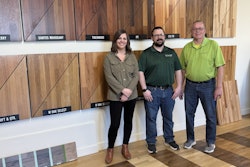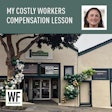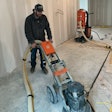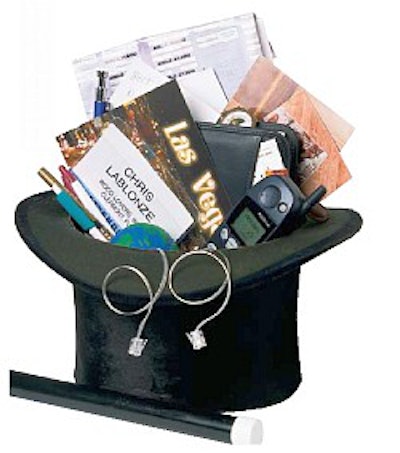
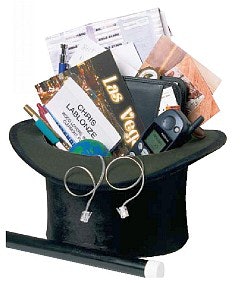
With tempting trinkets, flashy displays and persuasive demos greeting you at every turn down trade show aisles, you may find it difficult to decide where to spend your time. Instead of just meandering through the exhibit hall, chatting with friends and colleagues, stopping only occasionally for some purposeful business with an exhibitor, take a different route. Parlay your limited time in the exhibit hall into a genuine learning and networking experience. With a little attention to planning, you can get a tremendous return on the time you spend there. Here's how:
Consult coworkers. Before you leave for the show, talk to your coworkers about the problems and challenges you've faced over the last year, finding out what questions they would like answered and what information they need. That way, even if only one member of your company visits the show, every member of the team benefits.
Visit the trade show's Web site. Many sites today offer online registration, travel and hotel accommodation information. You can also learn a lot about the show—what classes will be offered when, and who will be speaking about what—by checking out the show's site. You can even plan your trip through the exhibit hall from the comfort of your own home by referencing online layouts. (Two examples are at www.surfacesexpo.com and www.nwfa.org.)
Set goals. Decide what you want out of each exhibit even before you start making the rounds. Do you need help with a thorny service problem? Looking to learn about a new line of prefinished products? Want information about a new vacuuming system or pneumatic nailer? Seeking advice about cutting costs? Keep these goals in mind as you visit each booth. You might even want to develop a list of standard questions to ask each exhibitor you visit.
Come prepared. Arrive at the show armed not only with your goals, but also with the printed material you need. It is surprising how many people come to trade shows without their business cards, or without enough of them. Have your dayplanner handy at all times for scheduling meetings during the show, as well as consulting it for future plans.
Plan your stops. With your goals in mind, pick up a map of the exhibit area before you begin browsing. Then identify a selection of booths that might offer especially useful information.
Divvy up the work. If you're attending the convention with a coworker and you have a lot of booths to visit, split up the booths between the two of you, either by interest area or physical location.
Stay in shape. Don't kid yourself: Spending a few hours in an exhibit hall can be a grueling experience. Whenever possible, wear loose-fitting clothing and, above all, comfortable shoes. Or take a lesson from veteran exhibitors, who often wear padding inside their shoes. Before setting out, eat a light meal. Avoid sugary snacks, caffeine or soft drinks in the hall; water and easy-to-digest snacks, such as dried fruit, will help keep your energy level high.
To revitalize yourself after walking around a busy exhibit hall, stand in a corner, and tense and rotate your foot and leg muscles, one limb at a time. Then, standing tall and relaxed, take five to 10 deep breaths before going along your way.
Know when to browse. Take advantage of the tempo of the trade show. When exhibit traffic is light, make your high-priority, business-oriented visits. You'll be able to spend more time with exhibitors this way. When traffic is heavier, you can browse through the lower priority booths more casually.
Understand the goals of exhibitors. They vary. Some exhibitors want to foster an image or impart positioning statements. Others may want to build prospect lists. Others may want to gather qualified leads. The list goes on and on. You can often identify an exhibitor's purpose with a quick glance or a brief conversation. Ask yourself: Is the exhibitor's goal compatible with yours? If not, don't spend much time there.
Stick to your agenda. Approach each booth with your agenda in mind. Stop, look around, introduce yourself, and then move directly to the business at hand.
Look for the quick message. When you approach a booth, look and listen for the "quick message"—the exhibitor's key points. The signs, posters or demonstrations around the booth often display this message at a glance.
Overlook the clutter and hype. Trade show exhibits are designed to whet your appetite for what's being offered there—and that's good. But don't spend so much time around the signs, the giveaways and the show-and-tell demonstrations that you neglect what you're really after.
Bring your specs. Bring along specifications for products you'll need in the months and years ahead. Refer to them when talking with exhibitors, and don't hesitate to pass copies along to exhibitors who may help fill your product needs later on.
Ask for help. Pose questions and problems—perhaps from a ready-made list—to exhibitors. Does your big machine continue to create chatter marks no matter what you do to eliminate them? Ask for help with specific problems you're having on the job. Exhibitors frequently can offer valuable solutions, insights and recommendations.
Request high-value materials. What relevant brochures, magazine reprints and case studies can exhibitors give you? If an exhibitor doesn't have what you're looking for, ask him to place your name on a follow-up list.
Ask about free seminars. Many exhibitors offer seminars or demonstrations during the convention or throughout the year. Ask for a schedule of events, and note topics, dates and times that are right for you.
Learn about the competition. Chat with the exhibitors about the competition. You might discover clues about their recent successes and problems.
Let them sell you. When you visit a busy trade show booth, you often have the opportunity to see the representatives of various companies in action—giving information, answering questions, attempting sales, managing the booth—in short, juggling myriad duties. It's a great time to test the capabilities of exhibitors, the quality of their products, and their ability to serve you.
Kick the tires. Participate in demonstrations and try your hand at surveys, exercises or evaluations offered by exhibitors. Do you have a product or service suggestion for an exhibitor? Don't hesitate to throw in your two cents before you leave. Have you used an exhibitor's products in the past? If so, offer examples of effective and ineffective performance. Offer your insights. Exhibitors take these suggestions very seriously, and often forward them to their home offices.
Become a customer. If you're pretty sure you're going to be doing business with an exhibitor, give her whatever information she needs to begin a successful sales relationship—right then and there. This information might include company background, credit references, products used now, quantity information and purchasing resources available.
Evaluate. Make a brief handwritten note after you leave each exhibit. Jot down the key points you've learned or issues you'd like to raise in a return conversation with the exhibitor. If you wait to do this until later, one exhibitor starts to blend in with the next.
Develop company contacts. Exhibitors often know the companies they represent inside and out. They may be able and willing to furnish you with the names and telephone numbers of key training, accounting and technical people in the company. If you're conscientious in gathering this information, you can often leave the convention hall with a treasure trove of new contacts. Follow up with key contacts after the show.
Organize information. You see them everywhere at trade shows—people weighed down by those free bags so full they're about to burst. Try a different tack: Carry a portfolio or bag with pockets so that you can sort printed material as you receive it. If you indiscriminately dump everything in an oversized bag, chances are that most of the material will eventually land in the circular file.
Talk to other visitors. Networking with your peers can be one of the most worthwhile aspects of your trip to a trade show. You can often learn about their needs and problems, and pick up valuable tips. Better yet, you can establish professional contacts who may be able to offer helpful suggestions for handling current and future problems.
Make the most of meals. While it maybe tempting to dine only with old friends or sneak in some quiet time by ordering room service, schedule meals with clients or new contacts. Chances are you'll make a new "old friend."
Look for benefits. Yes, you can get free promotional items and refreshments in the convention hall. But also look for benefits of lasting value: technical literature, case studies, product samples. Unlike the giveaways that bring momentary pleasure, items that influence your profitability offer lasting value—long after you return home.
Richard G. Ensman is a Rochester, N.Y.-based freelance business writer.















